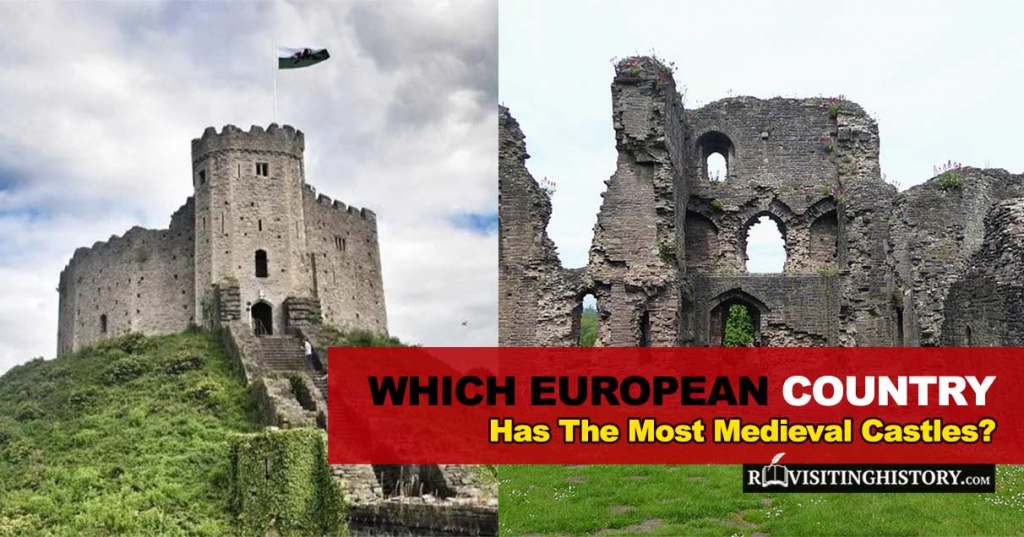Star Forts, or Bastion Forts, started popping up in the 15th century. Their design is a by-product of the invention of gunpowder.
At least … that’s the straightforward version of how these forts came into being. However, it took quite a while for the full evolution of these forts to take place. The story of star forts begins with the origin of gunpowder in 9th-century China. It traveled all the way through Asia to Europe, where star forts emerged as a defense system against the new cannon fire machines operated by gunpowder in the 15th century. The origin point of these forts is Italy, from where they were adopted all across Europe, England, and beyond. Below, we’ll take a look at everything you need to know about these types of forts.
Table of Contents
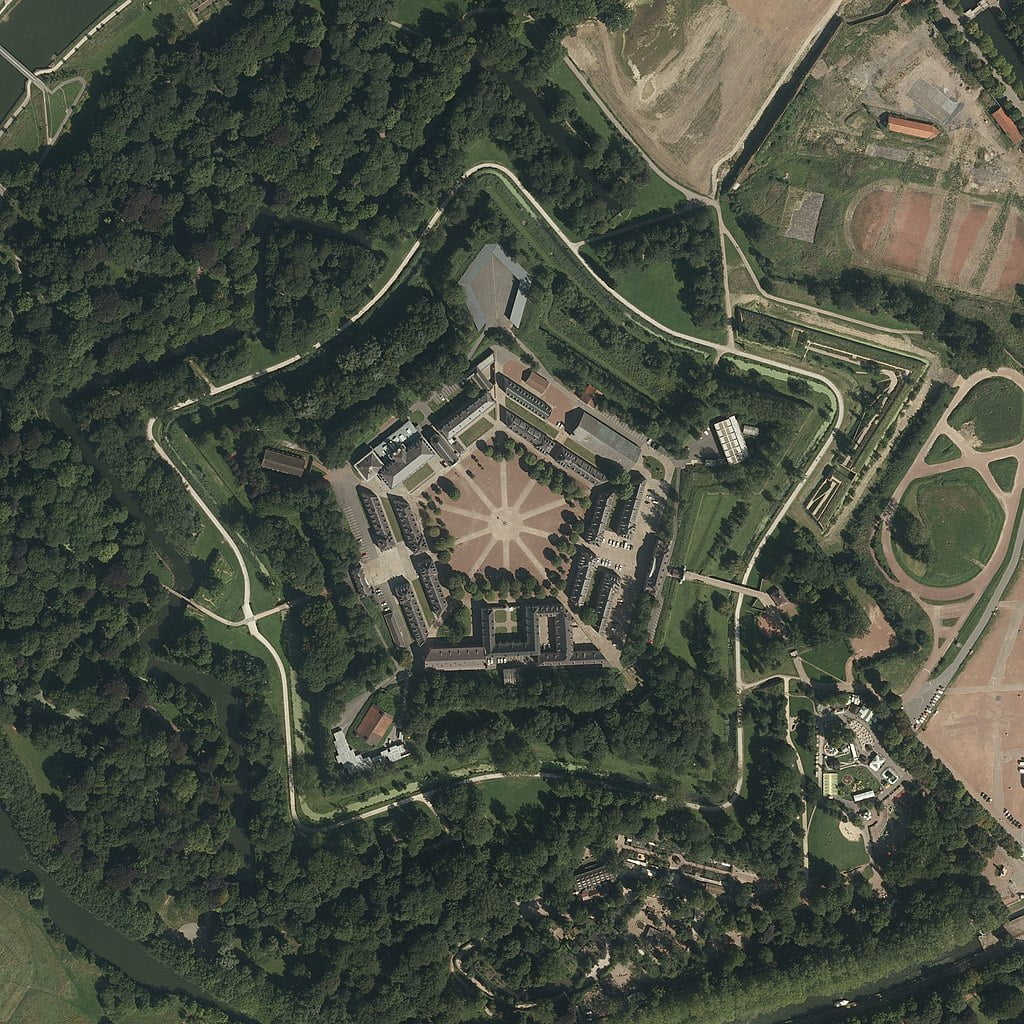
History of Star Forts
To understand the history of star forts, one must first understand the history of gunpowder. It emerged in China, but it wasn’t until the 12th century that the very first iterations of cannons started appearing. This invention traveled across the European and Asian continents and was popularized as the main mode of wartime attacks by the 14th century. It wasn’t until the French invasion of Italy that the first-star fort came into being.
The story goes like this: the French were armed with canons and the straight, high walls of medieval forts proved to be absolutely vulnerable against them. In contrast, star forts were designed with low walls. They were relatively flat structures with lozenge-like protrusions that gave them their “star” homonym. They were also made with bricks, instead of stone. The main reason for that was that bricks don’t shatter when hit by a sudden-impact object.
Fun fact: Michelangelo defended Florence with the help of star forts. In fact, he was the one who improved on the bastion earthworks. They were further refined by notable figures like Alcazar Peruzzi and Scamozzi.
For three centuries, the architecture of these forts kept evolving, until it also started being practiced in city planning. But, were they actually effective?
The answer is: yes, they truly were. The Battle of Pisa is a historical testament to their efficacy. It occurred in 1500 and saw a combined might of the French and Florentinian armies marching to attack Pisa. Instead of the tall, straight curtain wall of medieval times, the city was defended by the earth ramparts that became characteristic of star-shaped forts. These structures held their own against canon fire, thus proving their worth and setting up a historical example for posterity.
How Did Star Forts Emerge?
It seems that evolution in siege technology always resulted in the advancement of medieval architecture. In this case, star forts were developed to provide the utmost protection against cannon fire.
Medieval castles were usually positioned on high ground so that arrows shot from the castle walls could rain down on the enemies below. However, their tall and straight walls provided zero protection against the might of gunpowder-operated canons.
Perhaps the most prominent historical feat of canon destruction was that of the Constantinople walls by Sultan Mehmed the Second. This happened in 1453 and was a huge blow to medieval castle architecture. If the huge, previously impenetrable, walls of Constantinople had been breached, what hope did the rest of the European and English castles have?
Thus: the emergence of star forts, which were developed to provide resistance against the gunfire. This invention redefined the course of castle architecture for the next 300 years.
Fun fact: The theory behind star forts was also applied to urban design as well. The most famous example of this is the star city of Palmanova in Italy.
Architecture of Star Forts
While medieval forts & castles were straight-walled with towers and keeps, star forts were a completely new and different breed. They had unique architectural components and were a study in might. Below, we’ll take a look at each of their architectural elements in detail:

Boundary Wall Components of Star Forts
Glacis
These were low, sloppy retaining-wall-style structures (more like earthen banks), that formed part of the boundary wall. They sloped upward at an acute angle from the outside and were constructed flush against a mound of dirt on the inside. This type of wall structuring ensured that there would never be significant damage even when the canon was fired at it. In fact, the angle of the structure made point-blank canon assaults totally obsolete.

Bastions:
Bastions were the flanks that were attached to the glacis. They are the ones that gave the star forts their other name: bastion forts. While the glacis was the curtain-wall alternative, the bastions were attached to them as a lookout. Medieval forts had watch towers; star forts had bastions. They also provided shelter against the cannon fire from multiple directions. Straight walls would have been easy targets, so the walls of bastions were designed to be angular for this particular purpose.
Fun fact: The city of Amsterdam used to have multiple (22, to be exact) bastions along its boundary walls in the 17th century. Although impressive, it’s a good thing that they were never put to test. Turns out, maintaining such a huge infrastructural element is expensive. Lack of care ensured that these bastions crumbled and couldn’t withstand the tests of time. (Siena, Italy is another city that went bankrupt trying to boost its defense systems with bastions.)
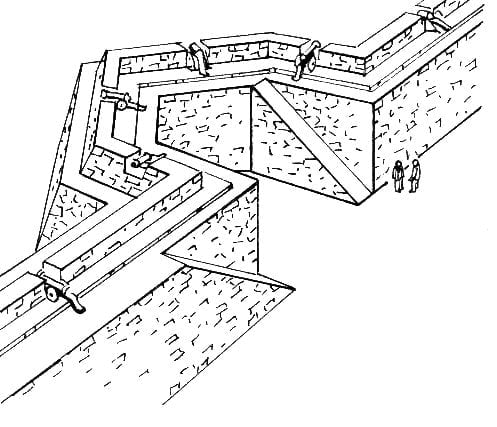
Moats:
Perhaps the only feature that was retained in star forts from medieval castle defense was the moat. It had proven quite effective in its previous incarnation, so it was also emulated in this new iteration of structures. It should be noted that most of them were dry ditches.
Tenaille:
Tenailles were walled structures that were erected in between two bastions. Their goal was to provide extra protection to the curtain wall and camouflage a postern gate where the residents of the castle could come out without being seen and surprise the enemy.

Ravelins:
Much like the tenailles, the ravelins were “detached outworks” that were constructed in front of each glacis for further protection. They were tall on the front side but often had low or no walls on the inside (the side facing the glacis). This particular feature was to prevent the enemy from taking shelter inside. They also had another function, though. They were meant to divide the oncoming enemy forces.

Crownwork
Another form of star fort outworks is crownwork. Its architecture consisted of a full-fledged bastion in the middle, which was flanked by two half-bastions on either side. The main purpose of this feature was to increase the amount of fortified area (especially bridges). They were constructed where enemies were most likely to attack.

Hornwork:
Hornwork is a shorter version of crownwork. Just like its accomplice, it’s used to increase the area of fortification. However, it’s quite limited in girth, with two “demi-bastions” or half bastions on each side with a glacis wall connecting them. Basically, just take the full bastion out of the crownwork and you’ll have a hornwork. Their side walls were extended as well and they were usually erected to defend the high ground.

Explore Medieval Times Deeper or Continue Reading…
Citadel of Star Fortresses
Much emphasis is paid to the outer boundary of the star forts, but what they defended is rarely discussed. At the very heart of every star fort lay a citadel. They were the evolved versions of the medieval keep. They provided residence to the owners as well as housed barracks and other outbuildings where armies resided and day-to-day activities took place. While there is a lot of information about medieval castle rooms out there, not much is known about the layout of the star fort citadel.
Star Fortresses Falling Into Obscurity
Star-shaped forts are one of the most impactful innovations – both in castle and city design. Their imprint on Europe is visible to this day, but after three centuries and an impressive advent in warfare machinery, they started to become obsolete.
In fact, they started being replaced with simpler polygonal castles in the 19th century, as their architecture wasn’t up to the mark against explosive artillery and shells anymore. Fort Tigne in Malta is an excellent example of this replacement.
After that, when tanks and airplanes came into existence, the very concept of a fortress became obsolete.
Famous Star Forts from Around the World
Star-shaped forts are elaborate structures, not as ornate as their gothic predecessors, but complex in their layout and defensive architectural elements. They’ve certainly left their mark on history as one of the most notable defensive structures of all time and are dotted across the Eurasian continent even today. Below, let’s take a look at some of the most famous star forts around the world:
Fort Saint Elmo
This star fort in Malta is one of the oldest of the genre. The main purpose of construction was to provide protection against Ottoman sieges. Strategically built, the fort had the clearest views of the harbor that it was constructed on. It was the brainchild of engineer Pietro Prato, and despite being swiftly constructed in a few months, it still held its own against the Ottomans for a whole month! It was later added to, and even suffered bombings during World War II. Today, it houses The National War Museum which covers almost 7000 years of Maltan history.
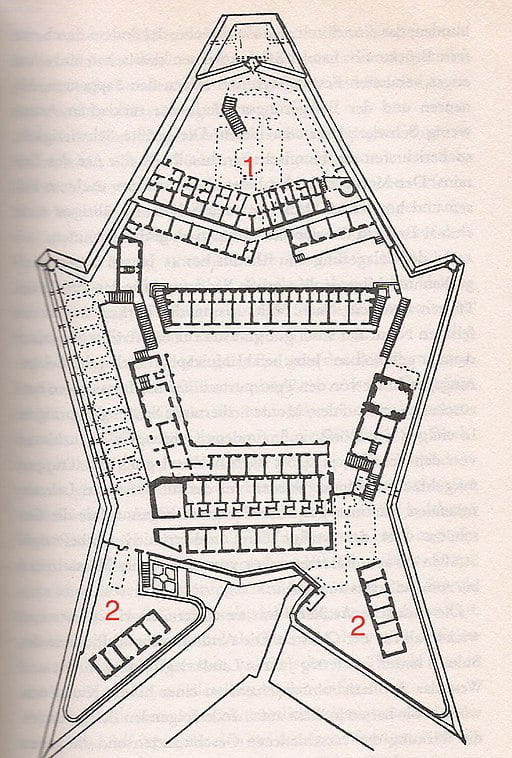
Tilbury Star Fort
Built in the 17th century, this fort is one of the best examples of English military architecture. It hugs the bank of the River Thames and was strategically positioned so that it could block the passage of enemy ships who wanted to attack London.
The bastions of this fort were designed so that they could cover multiple angles of the panorama and keep all the enemy vessels in clear sight. With the evolution of war weaponry, it eventually became redundant and was even tried to be sold off for private development. These days, it exists as a prime example of star-shaped forts and is considered one of the best-preserved ones out there.

Fort Bourtange
Fort Bourtange in the Netherlands was constructed to help the Dutch army hold its own in the Eighty Years’ War. Its swampy surroundings were the perfect moat alternative and provided the best defense against enemies who wanted to get near the castle walls. Eventually, the swamp dried up and the militaristic use of the fort ended. After that, the fort was converted into a village and remains a picturesque one to this day. It also enjoys the position of hosting the biggest citadel in the Lower Countries.

Rothenberg Fortress
This particular star fortress is located in Germany, and was constructed on land previously occupied by a Baroque fort. The unique thing about it is that it’s constructed entirely of brick, and is 588 meters (1929 ft) above sea level. The enormity of its architecture is truly awe-inspiring, but clearly not appreciated by all, as a Bavarian minister circa the 19th century, sold off all the removable parts of the castle. This included doors, windows, and even wooden beams. As a result, the castle fell into ruin and remains so to this day. However, it can be visited on a guided tour if you really want to experience it.

Forte Conde de Lippe
Located in Portugal, this star fort is officially named after its designer, but its original name goes like this: Forte de Nossa Senhora da Graça or the Fort of Our Lady of Grace. It was constructed during the reign of Maria I and showcased its defensive potential quite nicely during the War of Oranges and the Peninsular War. Its pentagonal bastions are definitely worth noting, the overall design is quite impressive. Historians have sung praises of its defensive features and especially noted how the reservoir is big enough to sustain a garrison of 2000 men for a whopping 2 years!

Jaca Citadel
Here’s another impressive star fortress, the only surviving Spanish example. The town where it’s located boasted strategic importance as it crossed borders with important areas. The fort was built in the 16th century to provide protection to the area and remains in a near-pristine condition to this day. It was used by the army until recently and is still well-maintained. It’s the most notable landmark in the city of Jaca. The architectural elements are still in pretty good condition, so it’s a great place to study and learn more about star fortresses as a whole.

Star Castle St. Mary’s
Located in the Isles of Sicily, Star Castle St. Mary’s hails back to the 16th century when it was commissioned and used by Queen Elizabeth to protect the area. It embraces its star homonym quite nicely: symmetrically designed with a citadel in the center. It has been through a number of important historical occasions; today, it’s a notable hotel. The architecture was already oriented to maximize the views of the Isles, so the rooms at the hotel have plenty of fresh air and provide excellent views of the outdoors.
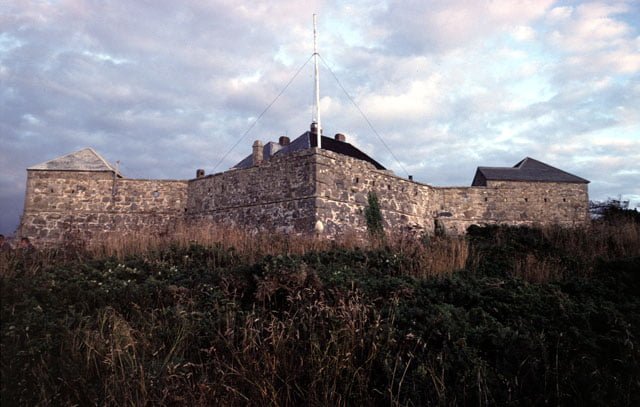
Kronborg Castle
Literary connoisseurs would know that Kronborg is actually Hamlet’s Castle – yes, Shakespeare set this particular play at this star fortress, though it’s not quite known if he actually visited Denmark or not. This castle also hailed quite a strategic position on the Baltic Sea and is even considered a UNESCO World Heritage Site. It’s known for its crypts and catacombs and hosts the famous Shakespeare Festival annually.
These forts where the next-generation after medieval castles fell, inable to keep up with developing mechanics. Although star forts too eventually fell out of favor, they enjoyed a brief moment in history as the reigning defensive system. They’re well worth the time to get to know and visit for the majestic views and stunning geometry they feature.



